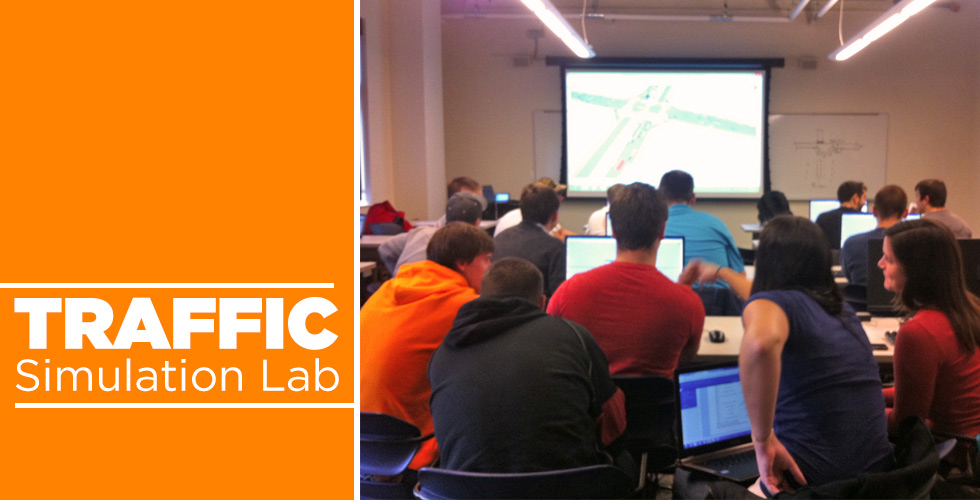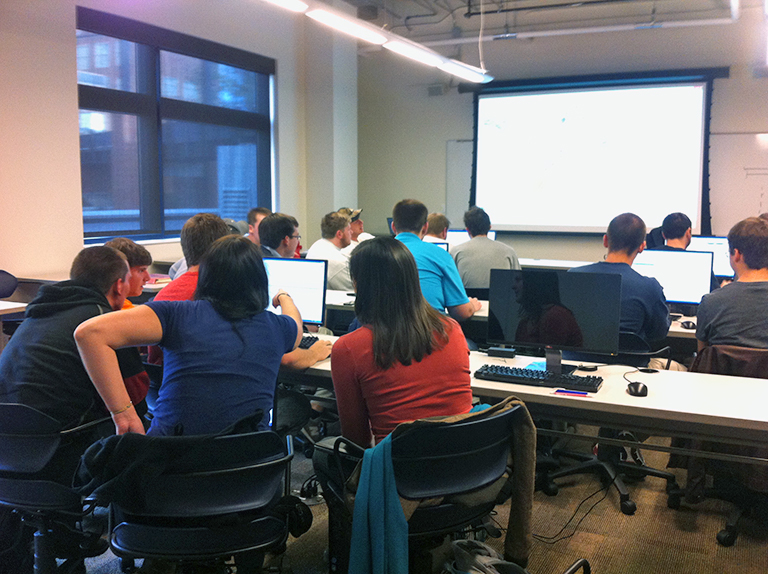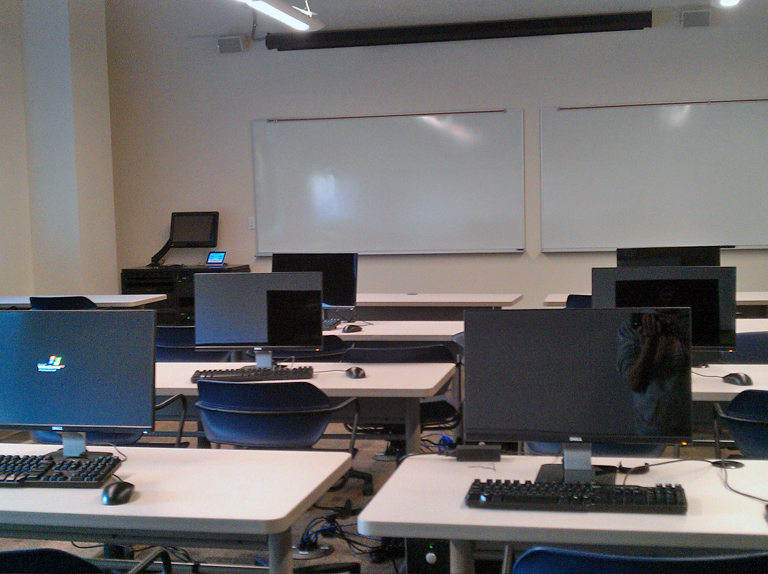Traffic simulation means the simulation with computer software that uses mathematical models to conduct experiments with traffic events on a transportation network or system over time.
The three categories of simulation models include microsimulation, macroscopic, and mesoscopic. In addition to the software mentioned below, ArcGIS, AutoCAD, Synchro, and other software are also used for transportation studies in spatial analysis, roadway geometric design, and signal optimization.
UT’s transportation computer lab has eight high-performance computers with software such as PTV VISSIM and Synchro for lab classes. CE 456, Transportation Engineering Lab uses this facility to experience variable transportation simulation software and tools. Up to 50 students can use this room at the same time. The lab also provides facilities such as a screen, projector, and A/V connections for presentation and teaching.
Transportation Software Systems
Microsimulation
- Aimsun
- ARCADY
- CityTrafficSimulator
- CORSIM
- DRACULA
- Cube Dynasim
- MATSim
- Quadstone Paramics
- Sidra Intersection
- Sidra Trip
- SimTraffic
- SIAS Paramics
- TransModeler
- TRITONE
- UAF
- PTV VISSIM
- PARAMICS
- SUMO
Macroscopic
- Aimsun
- DYNEV
- Emme
- OmniTRANS
- OREMS
- TransCAD
- TransModeler
- PTV Vissum
- Cube Voyager
Mesoscopic
- Aimsun
- Cube Avenue
- Dynameq
- DYNASMART
- DynusT
- OmniTRANS StreamLine
- Tracks
- TRANSIMS
- TransModeler
- Hybrid
- Aimsun
- TransModeler



